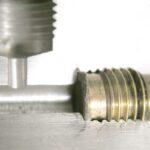Vibration testing plays a crucial role in the product development process, ensuring the reliability, durability, and overall performance of various products across diverse industries. This method involves subjecting a product to controlled vibrations to simulate real-world conditions and assess its ability to withstand such environmental stresses. The importance of vibration testing in product development cannot be overstated, as it helps identify weaknesses, improve design, and enhance the overall quality of a product.
One of the primary reasons for conducting vibration testing is to simulate the harsh conditions that products may encounter during their lifecycle. Products such as electronic devices, automotive components, and aerospace equipment are often exposed to vibrations during transportation, usage, and even storage. Without proper testing, manufacturers risk releasing products that may fail prematurely or exhibit reduced performance under these vibrational stresses. Vibration testing allows engineers to identify potential issues early in the development phase, leading to more robust and reliable products.
In the aerospace and automotive industries, where safety is paramount, vibration testing is especially critical. Aircraft, automobiles, and their components are subjected to various levels of vibrations during operation. Testing these products under simulated conditions helps ensure that they meet stringent safety standards and can withstand the dynamic environments in which they operate. By identifying and addressing weaknesses in the design phase, manufacturers can prevent catastrophic failures and enhance the overall safety of their products.
Electronics, another industry heavily reliant on vibration testing, benefits from this process to ensure the integrity of components such as printed circuit boards (PCBs) and electronic devices. Vibrations can affect solder joints, connections, and internal components, leading to malfunctions or premature failures. By subjecting electronic products to controlled vibrations, engineers can detect and rectify design flaws, ultimately improving the reliability of the final product.
Moreover, vibration testing is instrumental in optimizing the performance of products. By understanding how vibrations affect different materials and structures, engineers can refine designs to enhance durability and functionality. This iterative process of testing and refinement is essential for achieving the desired product performance while minimizing the risk of unexpected failures.
The importance of vibration testing in product development cannot be overstated. It is a fundamental step in ensuring the reliability, safety, and overall quality of products across various industries. By subjecting products to simulated vibrational stresses, manufacturers can identify and rectify design flaws early in the development process, ultimately delivering more robust and dependable products to consumers.
 Mastering Online Masterclasses: Choosing the Right Online Violin Instructors
Mastering Online Masterclasses: Choosing the Right Online Violin Instructors  Empowering Healthcare Professionals: How WT Farley Oxygen Regulators Enhance Patient Care
Empowering Healthcare Professionals: How WT Farley Oxygen Regulators Enhance Patient Care  Elevate Your Collection: Unveiling the Beauty of Custom Wine Cellars in Ottawa
Elevate Your Collection: Unveiling the Beauty of Custom Wine Cellars in Ottawa  Enhancing Your Online Presence with Real Estate SEO Services
Enhancing Your Online Presence with Real Estate SEO Services  The Epitome of Luxury: Elevating Spaces with Imperial High-End Kitchen Cabinets
The Epitome of Luxury: Elevating Spaces with Imperial High-End Kitchen Cabinets  Pokémon go accounts- Exploring the reasons behind player demand
Pokémon go accounts- Exploring the reasons behind player demand  Pokemon go shortcut to greatness – Buy now
Pokemon go shortcut to greatness – Buy now  Online slot games for classic fruit machine lovers
Online slot games for classic fruit machine lovers  Ensuring Security In Online Fund Transfers: Understanding Fraud Prevention And Risk Mitigation
Ensuring Security In Online Fund Transfers: Understanding Fraud Prevention And Risk Mitigation 




